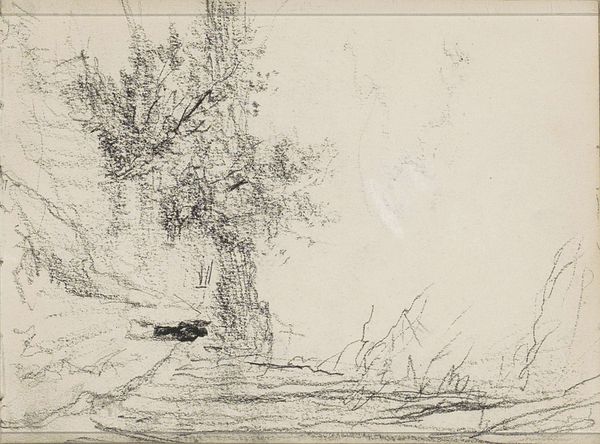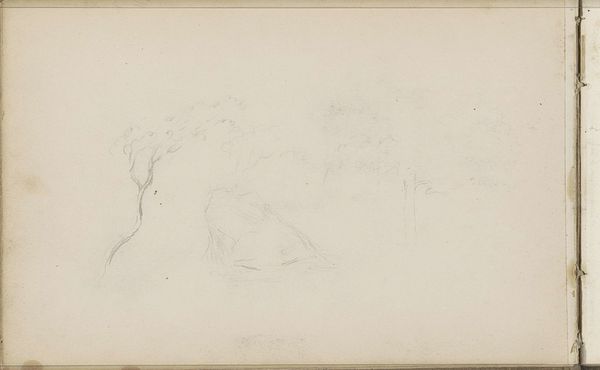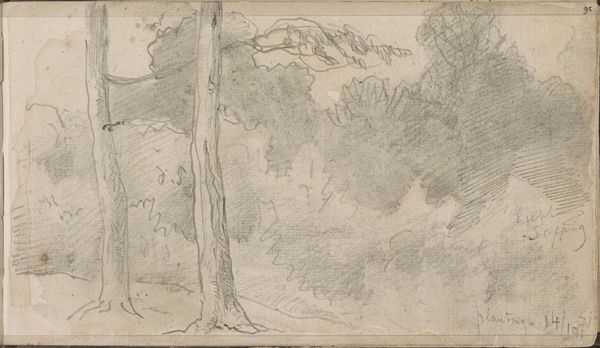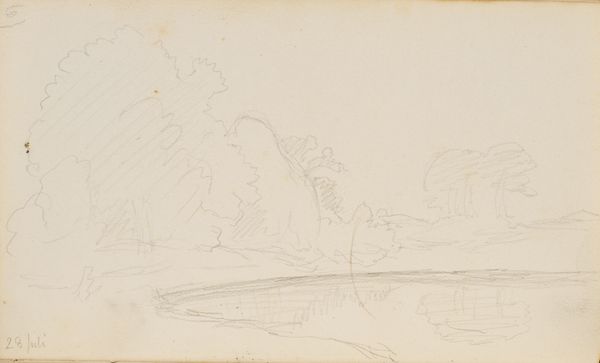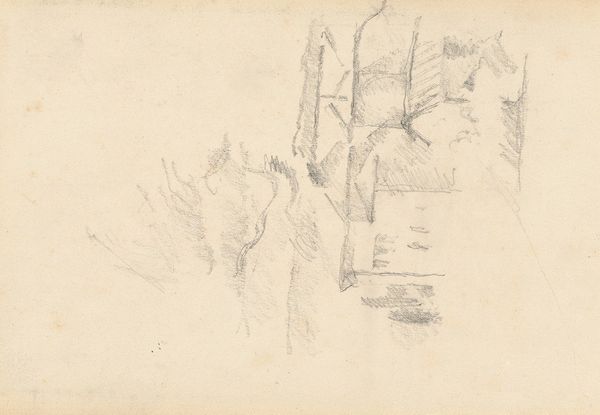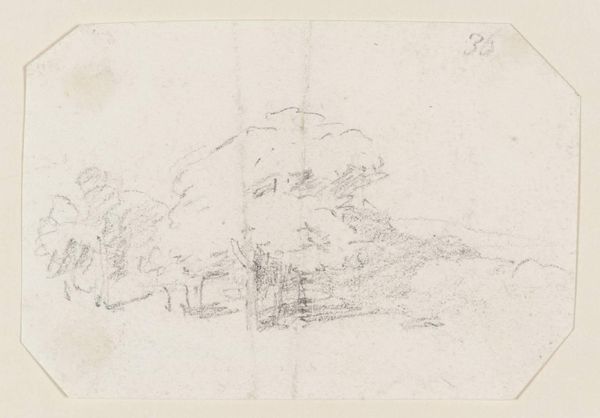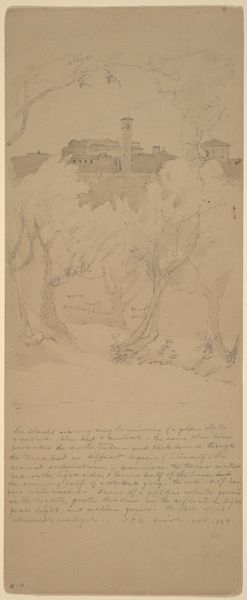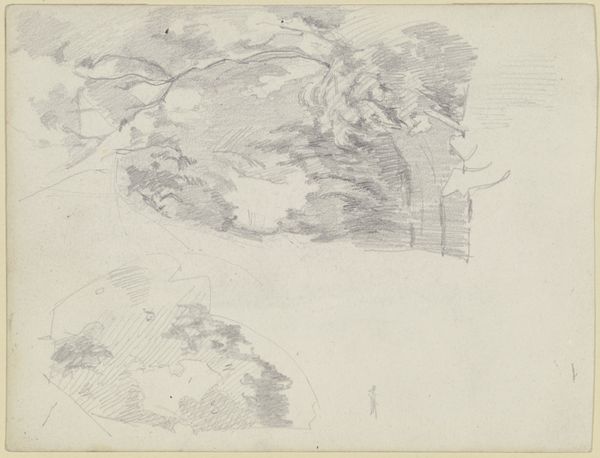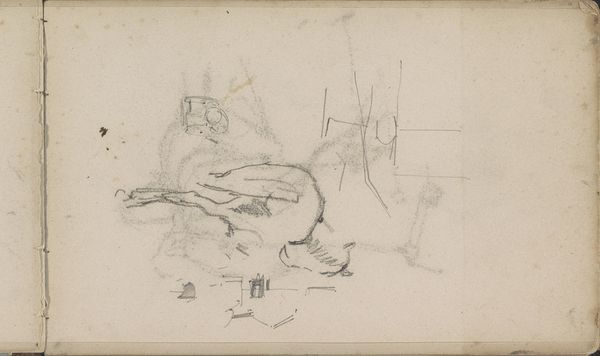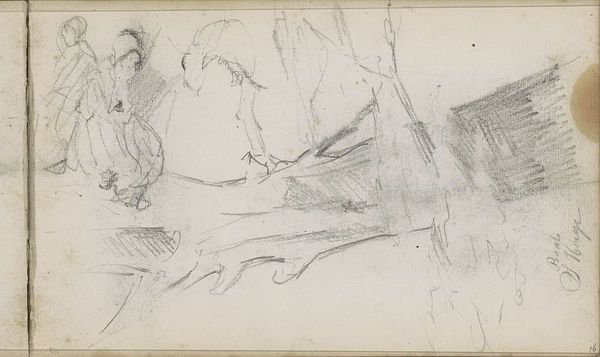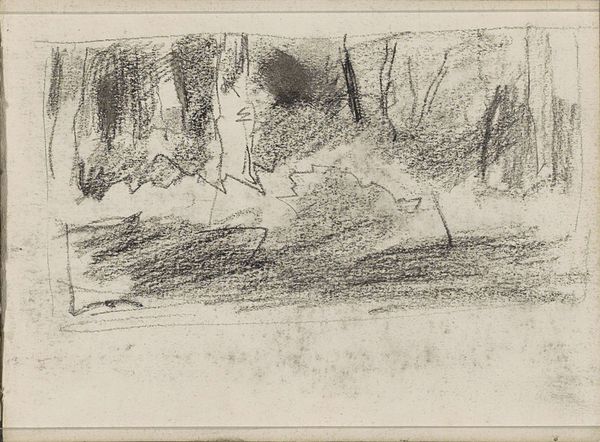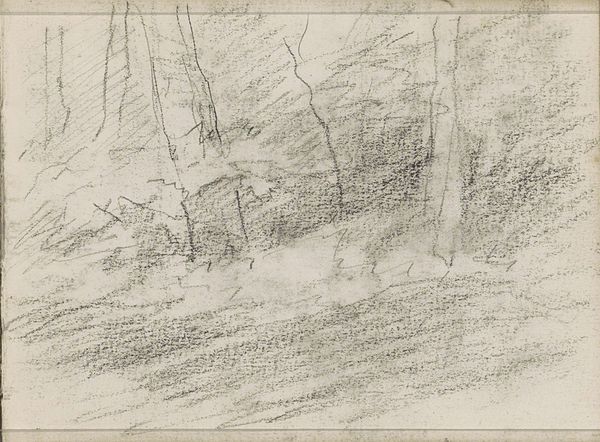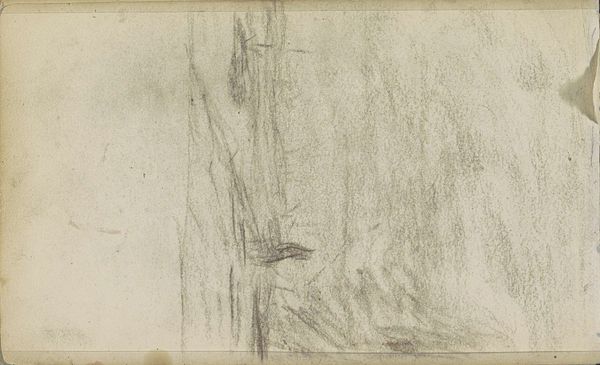
drawing, paper, pencil
#
drawing
#
pencil sketch
#
sketch book
#
landscape
#
paper
#
pencil
#
realism
Copyright: Rijks Museum: Open Domain
Curator: Willem Roelofs' "Landschappen," dating from approximately 1846 to 1851, presents us with a fascinating study in pencil on paper, currently held at the Rijksmuseum. Editor: It feels incomplete, like catching a glimpse of something half-remembered, a landscape trying to materialize. The soft grey pencil strokes almost dissolve into the paper itself. Curator: The dissolving quality perhaps speaks to the artist’s intent, Roelofs was very interested in depicting light and atmosphere, and these sketches likely capture fleeting moments of observation. We might consider this work in dialogue with ideas of the sublime in landscape, perhaps evoking a kind of picturesque melancholia that was fashionable at the time. Editor: Well, looking closely, it is all about mark-making; the pressure of the pencil creates volume. It's also very process-oriented: the quick, repetitive marks clearly point towards on-site sketching. He must have sat outside, capturing the basic forms of the land—what sort of pencil and paper were typical then? Were his choices aligned with common practice, or was there a consideration for how those materials helped convey particular sensory elements of his practice? Curator: Indeed. The landscape in this mode allowed for studies of nature's power, particularly in relation to humanity, and how a nation related to its surrounding landscapes became a signifier for national identity, Roelofs being a primary source of inspiration for younger landscape artists, such as the painters of the Hague School. His exploration of the pastoral landscape could certainly be a reflection of his own experiences and those of his community. Editor: So, thinking of this piece in light of the changing consumption of art through drawings: we see studies for more finished and conventionally presented paintings made available in new and expanding public arenas—art associations and public exhibitions. Does this example of drawing signal anything new in the process of expanding artistic markets in the Netherlands? Curator: That's an insightful consideration, It points to how artistic practices were shifting in relation to burgeoning public interest in art and national landscapes. Viewing “Landschappen” here at the Rijksmuseum underscores how seemingly preliminary works carry layers of artistic and historical significance, challenging what constitutes "finished" art. Editor: Exactly. By focusing on the process of production we can look past art history as some lineage of great names, and appreciate how artists contributed through their engagement with tools, places, and markets. Curator: Thank you, viewing this delicate sketch, then, opens our minds not only to how art-making affects and is affected by our material surroundings, but moreover to our ever-developing, psychological relationship with nature.
Comments
No comments
Be the first to comment and join the conversation on the ultimate creative platform.
